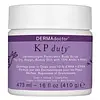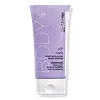What's inside
What's inside
 Key Ingredients
Key Ingredients

 Benefits
Benefits

 Concerns
Concerns

 Ingredients Side-by-side
Ingredients Side-by-side

Water
Skin ConditioningHydrated Silica
AbrasiveLactic Acid
BufferingCaprylic/Capric Triglyceride
MaskingStearyl Alcohol
EmollientCetyl Alcohol
EmollientSorbitol
HumectantSodium Hydroxide
BufferingCetearyl Alcohol
EmollientGlycolic Acid
BufferingGluconolactone
Skin ConditioningLactobionic Acid
BufferingSalix Alba Bark Extract
AstringentOenothera Biennis Oil
EmollientBorago Officinalis Seed Oil
EmollientRibes Nigrum Seed Oil
EmollientCamellia Sinensis Leaf Extract
AntimicrobialGlycerin
HumectantEthylhexylglycerin
Skin ConditioningXanthan Gum
EmulsifyingCetearyl Glucoside
EmulsifyingSodium Chloride
MaskingSodium Lauroyl Methyl Isethionate
CleansingPhenoxyethanol
PreservativeWater, Hydrated Silica, Lactic Acid, Caprylic/Capric Triglyceride, Stearyl Alcohol, Cetyl Alcohol, Sorbitol, Sodium Hydroxide, Cetearyl Alcohol, Glycolic Acid, Gluconolactone, Lactobionic Acid, Salix Alba Bark Extract, Oenothera Biennis Oil, Borago Officinalis Seed Oil, Ribes Nigrum Seed Oil, Camellia Sinensis Leaf Extract, Glycerin, Ethylhexylglycerin, Xanthan Gum, Cetearyl Glucoside, Sodium Chloride, Sodium Lauroyl Methyl Isethionate, Phenoxyethanol
Water
Skin ConditioningAlumina
AbrasiveAloe Barbadensis Leaf Juice
Skin ConditioningSilica
AbrasiveGlycerin
HumectantCaprylic/Capric Triglyceride
MaskingCetearyl Alcohol
EmollientHelianthus Annuus Seed Oil
EmollientCocos Nucifera Oil
MaskingStearyl Alcohol
EmollientMicrocrystalline Cellulose
AbsorbentPropanediol
SolventBetaine
HumectantCellulose
AbsorbentSodium Methyl Cocoyl Taurate
CleansingLactobacillus/Punica Granatum Fruit Ferment Extract
Skin ConditioningLactic Acid
BufferingSodium Hyaluronate
HumectantLeuconostoc/Radish Root Ferment Filtrate
AntimicrobialOryza Sativa Bran Extract
Skin ConditioningHelianthus Annuus Extract
EmollientRosmarinus Officinalis Leaf Extract
AntimicrobialHelianthus Annuus Seed Wax
Skin ConditioningSimmondsia Chinensis Seed Oil
EmollientTrisodium Ethylenediamine Disuccinate
Myristyl Nicotinate
Skin ConditioningOryza Sativa Hull Powder
AbrasiveCetearyl Glucoside
EmulsifyingDehydroxanthan Gum
Emulsion StabilisingTocopherol
AntioxidantGlucose
HumectantEthylhexylglycerin
Skin ConditioningParfum
MaskingCitric Acid
BufferingSodium Benzoate
MaskingSodium Hydroxide
BufferingPotassium Sorbate
PreservativeBenzyl Salicylate
PerfumingGeraniol
PerfumingLinalool
PerfumingWater, Alumina, Aloe Barbadensis Leaf Juice, Silica, Glycerin, Caprylic/Capric Triglyceride, Cetearyl Alcohol, Helianthus Annuus Seed Oil, Cocos Nucifera Oil, Stearyl Alcohol, Microcrystalline Cellulose, Propanediol, Betaine, Cellulose, Sodium Methyl Cocoyl Taurate, Lactobacillus/Punica Granatum Fruit Ferment Extract, Lactic Acid, Sodium Hyaluronate, Leuconostoc/Radish Root Ferment Filtrate, Oryza Sativa Bran Extract, Helianthus Annuus Extract, Rosmarinus Officinalis Leaf Extract, Helianthus Annuus Seed Wax, Simmondsia Chinensis Seed Oil, Trisodium Ethylenediamine Disuccinate, Myristyl Nicotinate, Oryza Sativa Hull Powder, Cetearyl Glucoside, Dehydroxanthan Gum, Tocopherol, Glucose, Ethylhexylglycerin, Parfum, Citric Acid, Sodium Benzoate, Sodium Hydroxide, Potassium Sorbate, Benzyl Salicylate, Geraniol, Linalool
Ingredients Explained
These ingredients are found in both products.
Ingredients higher up in an ingredient list are typically present in a larger amount.
This ingredient is an emollient, solvent, and texture enhancer. It is considered a skin-softener by helping the skin prevent moisture loss.
It helps thicken a product's formula and makes it easier to spread by dissolving clumping compounds.
Caprylic Triglyceride is made by combining glycerin with coconut oil, forming a clear liquid.
While there is an assumption Caprylic Triglyceride can clog pores due to it being derived from coconut oil, there is no research supporting this.
Learn more about Caprylic/Capric TriglycerideCetearyl alcohol is a mixture of two fatty alcohols: cetyl alcohol and stearyl alcohol. It is mainly used as an emulsifier. Emulsifiers help prevent the separation of oils and products. Due to its composition, it can also be used to thicken a product or help create foam.
Cetearyl alcohol is an emollient. Emollients help soothe and hydrate the skin by trapping moisture.
Studies show Cetearyl alcohol is non-toxic and non-irritating. The FDA allows products labeled "alcohol-free" to have fatty alcohols.
This ingredient is usually derived from plant oils such as palm, vegetable, or coconut oils. There is debate on whether this ingredient will cause acne.
Due to the fatty acid base, this ingredient may not be Malassezia folliculitis safe.
Learn more about Cetearyl AlcoholCetearyl Glucoside is a surfactant and emulsifier. It can be produced from synthetic of natural sources of cetearyl alcohol and glucose.
Emulsifiers help prevent ingredients from separating, such as oils and waters. It can also be used to enhance the texture of products.
As a surfactant, Cetearyl Glucoside helps during the cleansing process. By gathering all the dirt and oils, it allows these molecules to be washed away easily.
Learn more about Cetearyl GlucosideEthylhexylglycerin (we can't pronounce this either) is commonly used as a preservative and skin softener. It is derived from glyceryl.
You might see Ethylhexylglycerin often paired with other preservatives such as phenoxyethanol. Ethylhexylglycerin has been found to increase the effectiveness of these other preservatives.
Glycerin is already naturally found in your skin. It helps moisturize and protect your skin.
A study from 2016 found glycerin to be more effective as a humectant than AHAs and hyaluronic acid.
As a humectant, it helps the skin stay hydrated by pulling moisture to your skin. The low molecular weight of glycerin allows it to pull moisture into the deeper layers of your skin.
Hydrated skin improves your skin barrier; Your skin barrier helps protect against irritants and bacteria.
Glycerin has also been found to have antimicrobial and antiviral properties. Due to these properties, glycerin is often used in wound and burn treatments.
In cosmetics, glycerin is usually derived from plants such as soybean or palm. However, it can also be sourced from animals, such as tallow or animal fat.
This ingredient is organic, colorless, odorless, and non-toxic.
Glycerin is the name for this ingredient in American English. British English uses Glycerol/Glycerine.
Learn more about GlycerinLactic Acid is another well-loved alpha hydroxy acid (AHA). It is gentler than glycolic acid but still highly effective.
Its main role is to exfoliate the surface of the skin by loosening the “glue” that holds dead skin cells together. Shedding those old cells leads to smoother, softer, and more even-toned skin.
Because lactic acid molecules are larger than glycolic acid, they don’t penetrate as deeply. This means they’re less likely to sting or irritate, making it a great choice for beginners or those with sensitive skin.
Like glycolic acid, it can:
Lactic acid also acts as a humectant (like hyaluronic acid). It can draw water into the skin to improve hydration and also plays a role in the skin's natural moisturizing factor (NMF) in the form of sodium lactate.
Studies show it can boost ceramide production to strengthen the skin barrier and even help balance the skin’s microbiome.
To get results, choose products with a pH between 3-4.
Lower strengths (5-12%) focus on surface exfoliation; higher strengths (12% and up) can reach deeper in the dermis (deeper, supportive layer) to improve skin texture and firmness over time.
Though it was originally derived from milk, most modern lactic acid used in skincare is vegan. It is made through non-dairy fermentation to create a bio-identical and stable form suitable for all formulations.
When lactic acid shows up near the end of an ingredient list, it usually means the brand added just a tiny amount to adjust the product’s pH.
Legend has it that Cleopatra used to bathe in sour milk to help reduce wrinkles.
Lactic acid is truly a gentle multitasker: it exfoliates, hydrates, strengthens, and brightens. It's a great ingredient for giving your skin a smooth, glowing, and healthy look without the harshness of stronger acids.
Read more about some other popular AHA's here:
Learn more about Lactic AcidSodium Hydroxide is also known as lye or caustic soda. It is used to adjust the pH of products; many ingredients require a specific pH to be effective.
In small amounts, sodium hydroxide is considered safe to use. However, large amounts may cause chemical burns due to its high alkaline.
Your skin has a natural pH and acid mantle. This acid mantle helps prevent harmful bacteria from breaking through. The acid mantle also helps keep your skin hydrated.
"Alkaline" refers to a high pH level. A low pH level would be considered acidic.
Learn more about Sodium HydroxideStearyl Alcohol is a type of fatty alcohol from stearic acid. It is a white, waxy compound used to emulsify ingredients.
Fatty Alcohols are most often used as an emollient or to thicken a product. Emollients help soothe and hydrate the skin by trapping moisture.
They are usually derived from natural fats and oils and therefore do not have the same drying or irritating effect as solvent alcohols. FDA allows products labeled "alcohol-free" to have fatty alcohols.
Learn more about Stearyl AlcoholWater. It's the most common cosmetic ingredient of all. You'll usually see it at the top of ingredient lists, meaning that it makes up the largest part of the product.
So why is it so popular? Water most often acts as a solvent - this means that it helps dissolve other ingredients into the formulation.
You'll also recognize water as that liquid we all need to stay alive. If you see this, drink a glass of water. Stay hydrated!
Learn more about Water